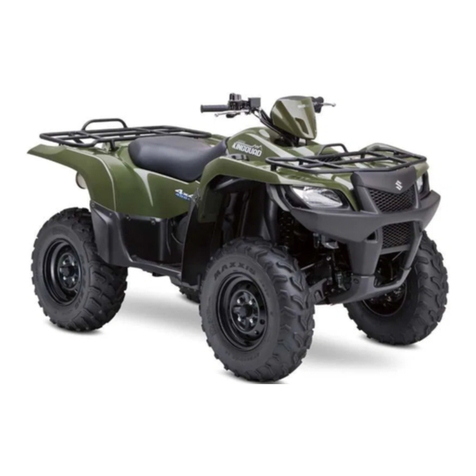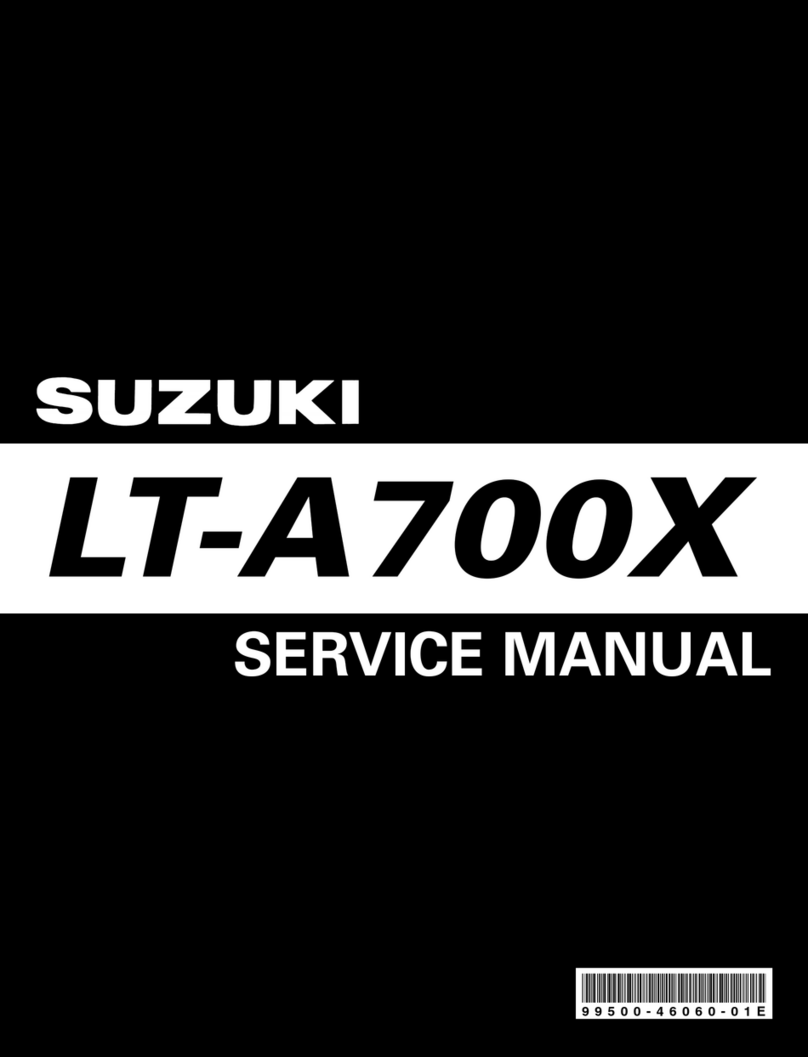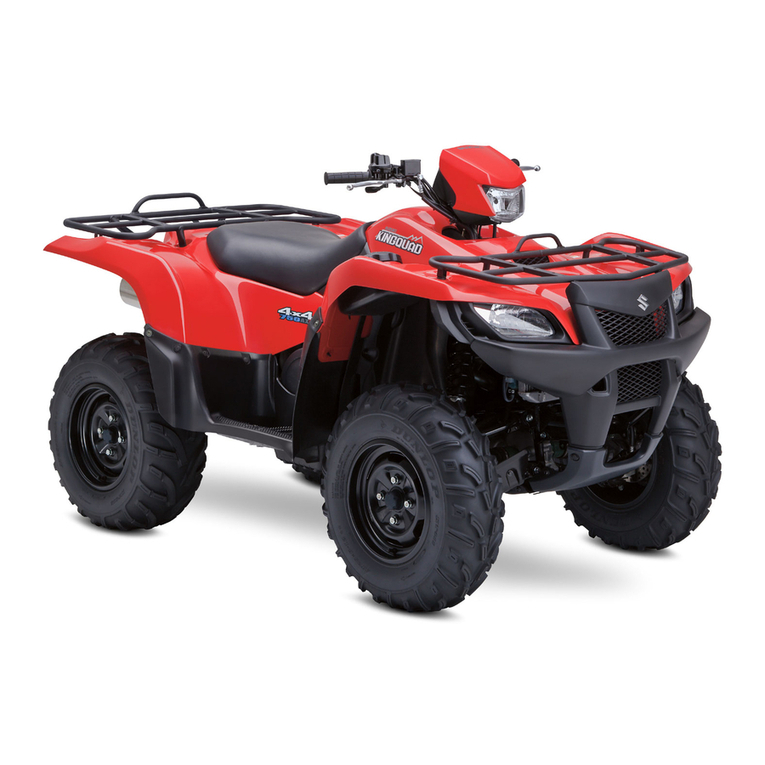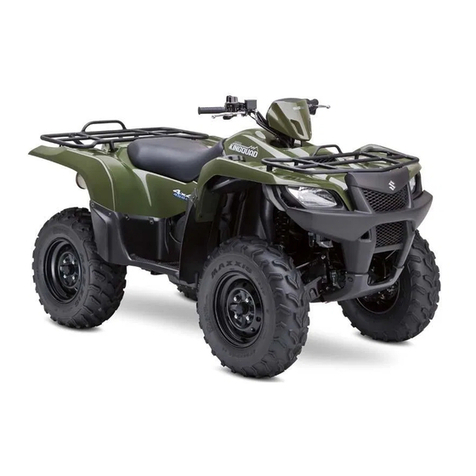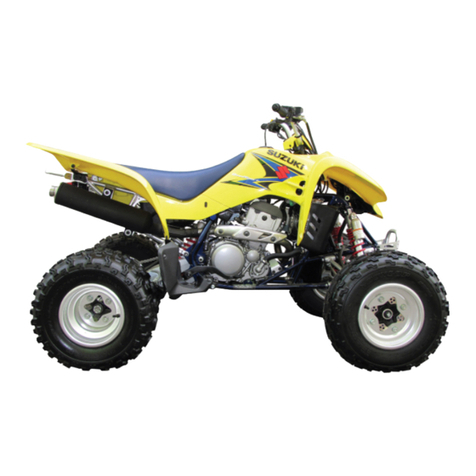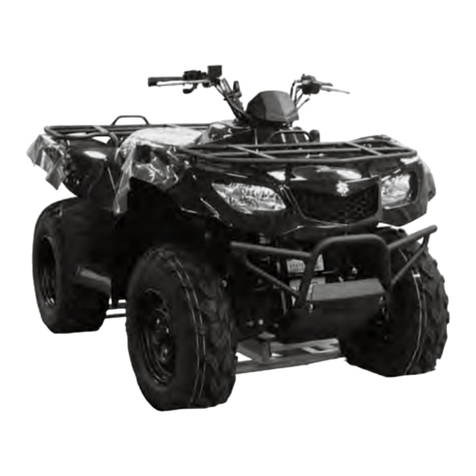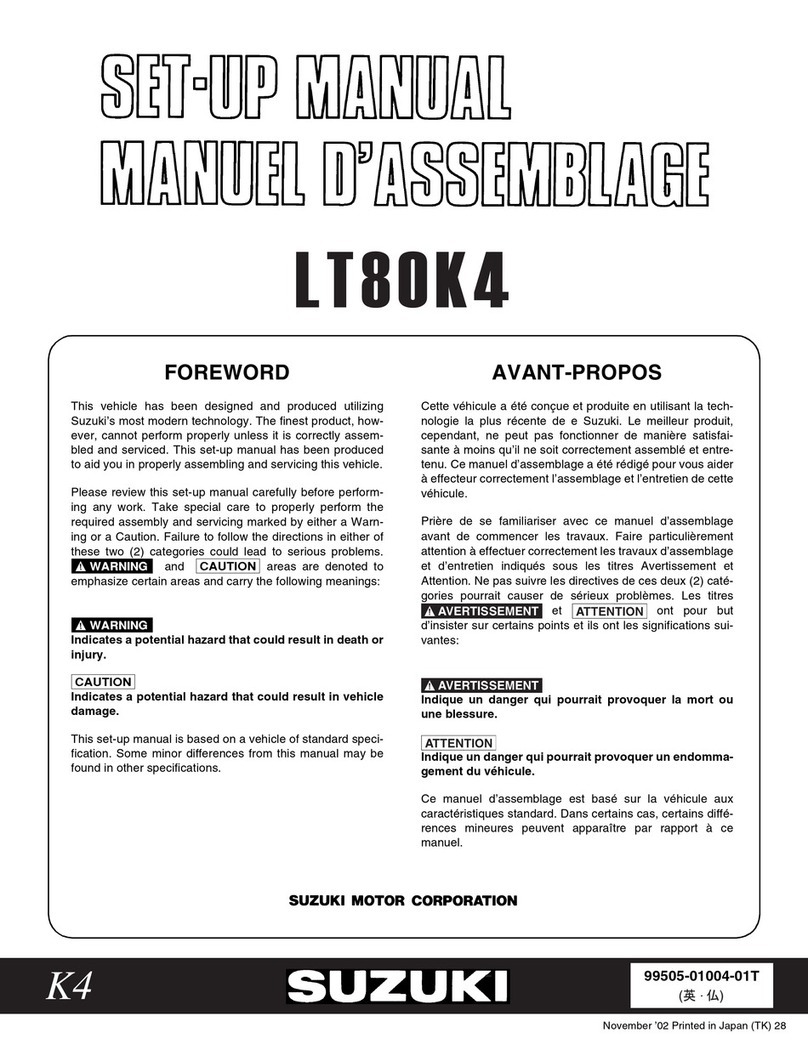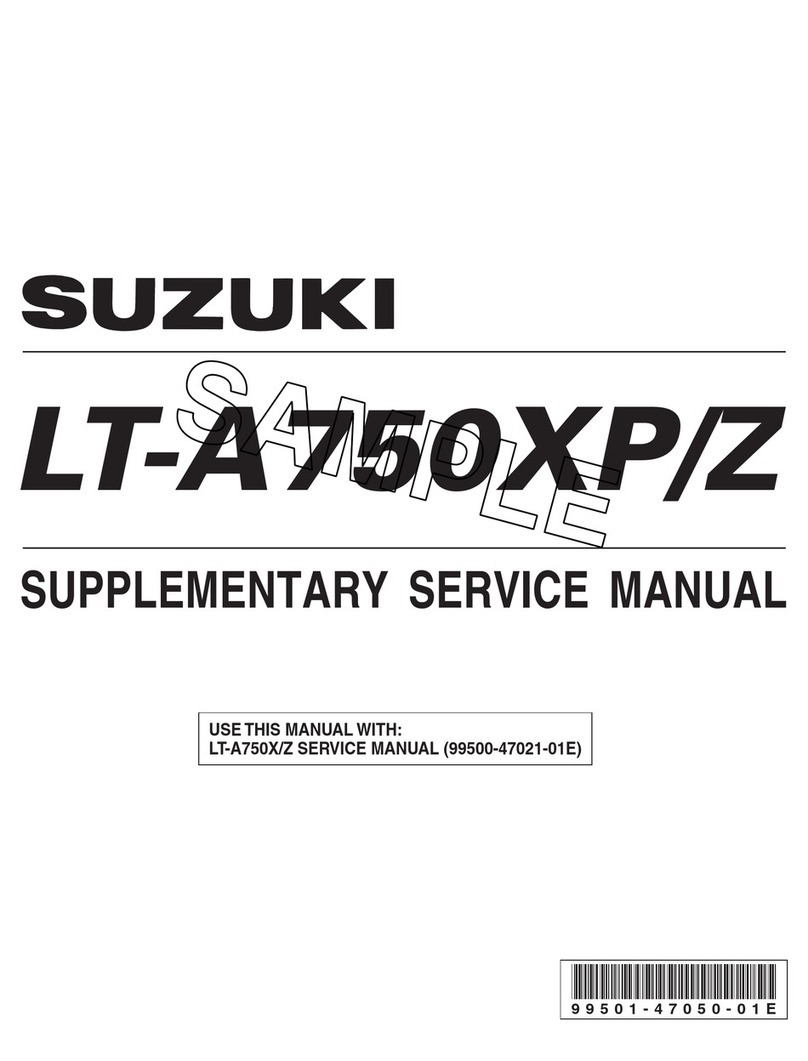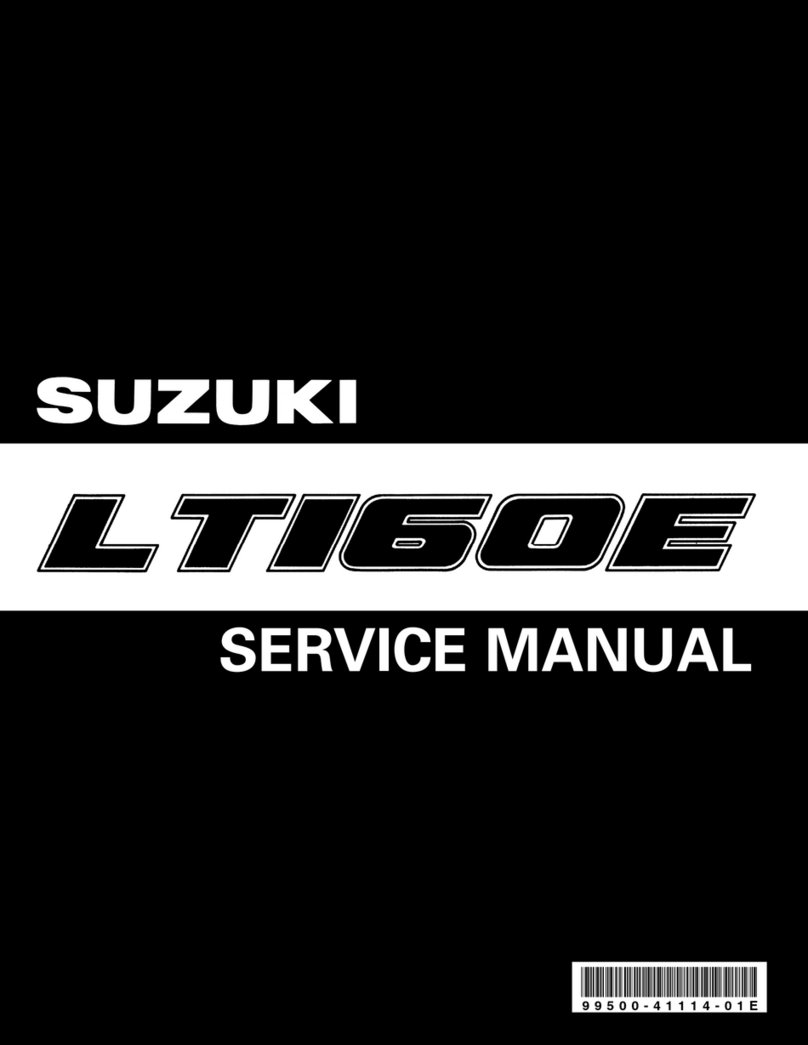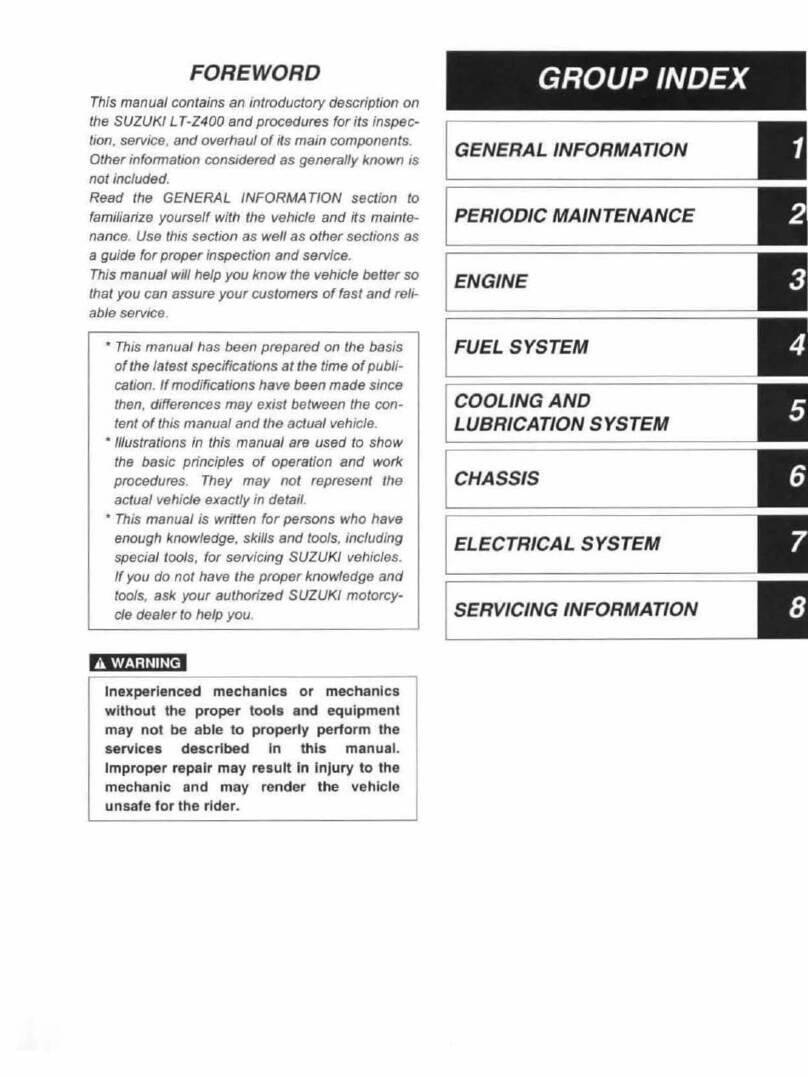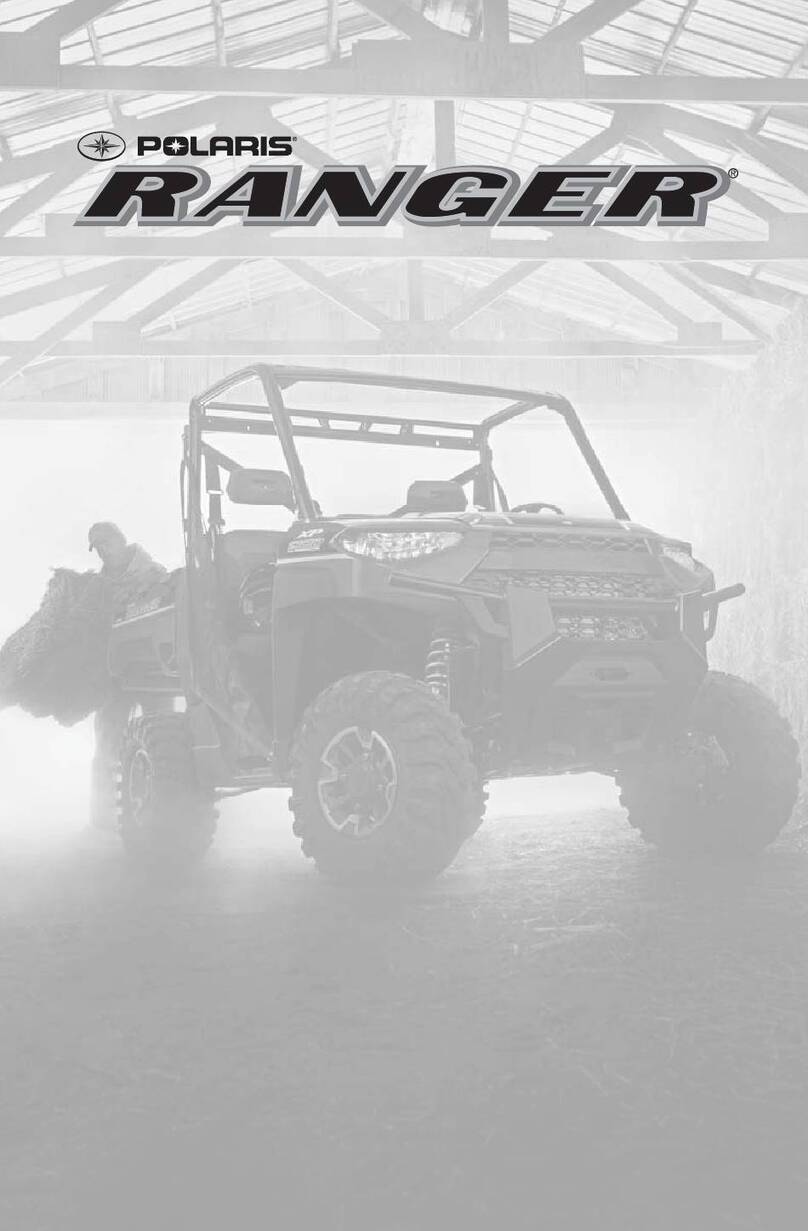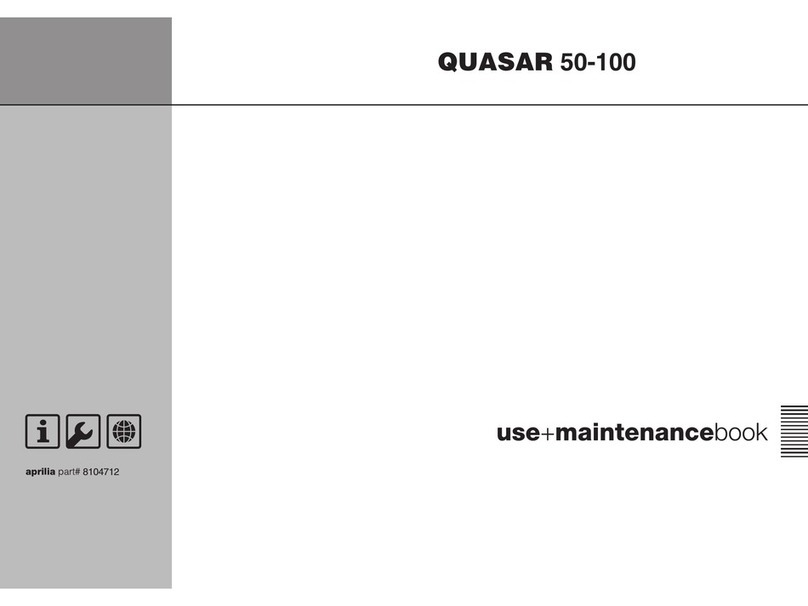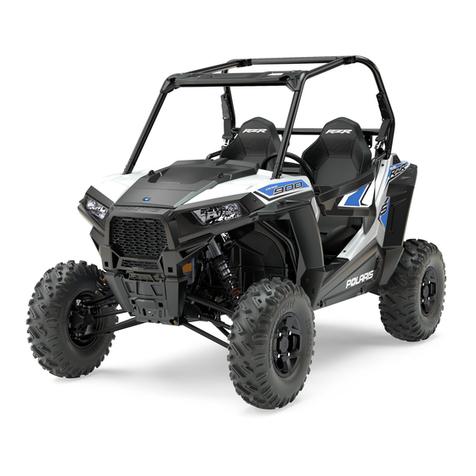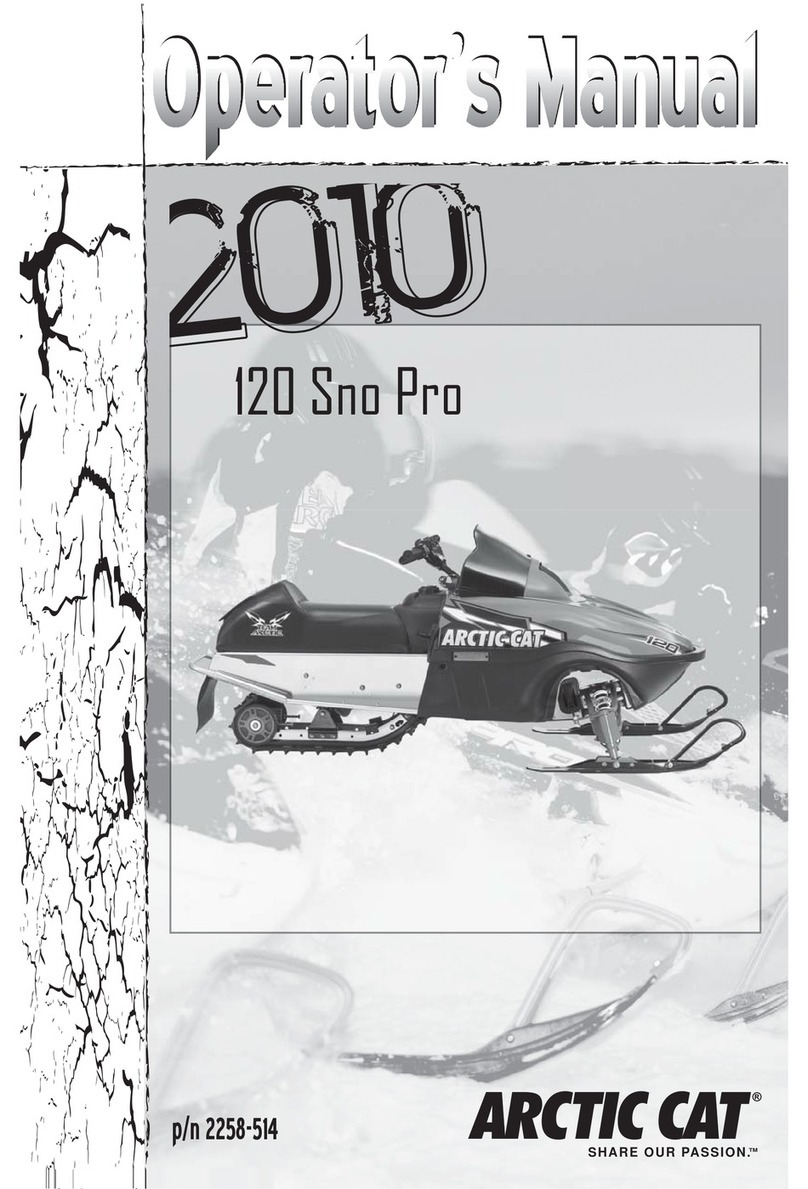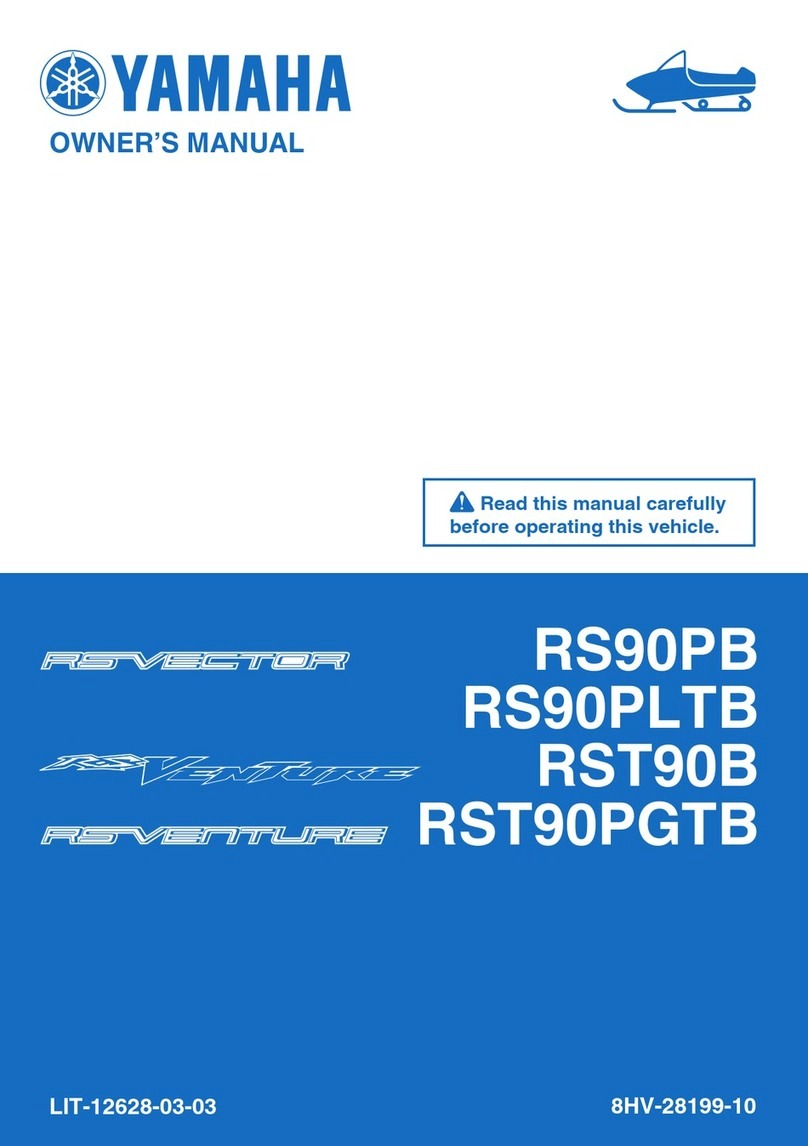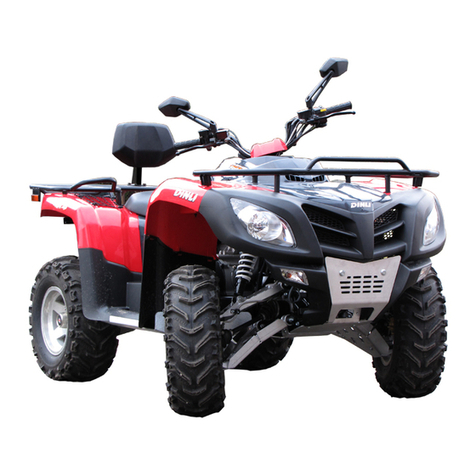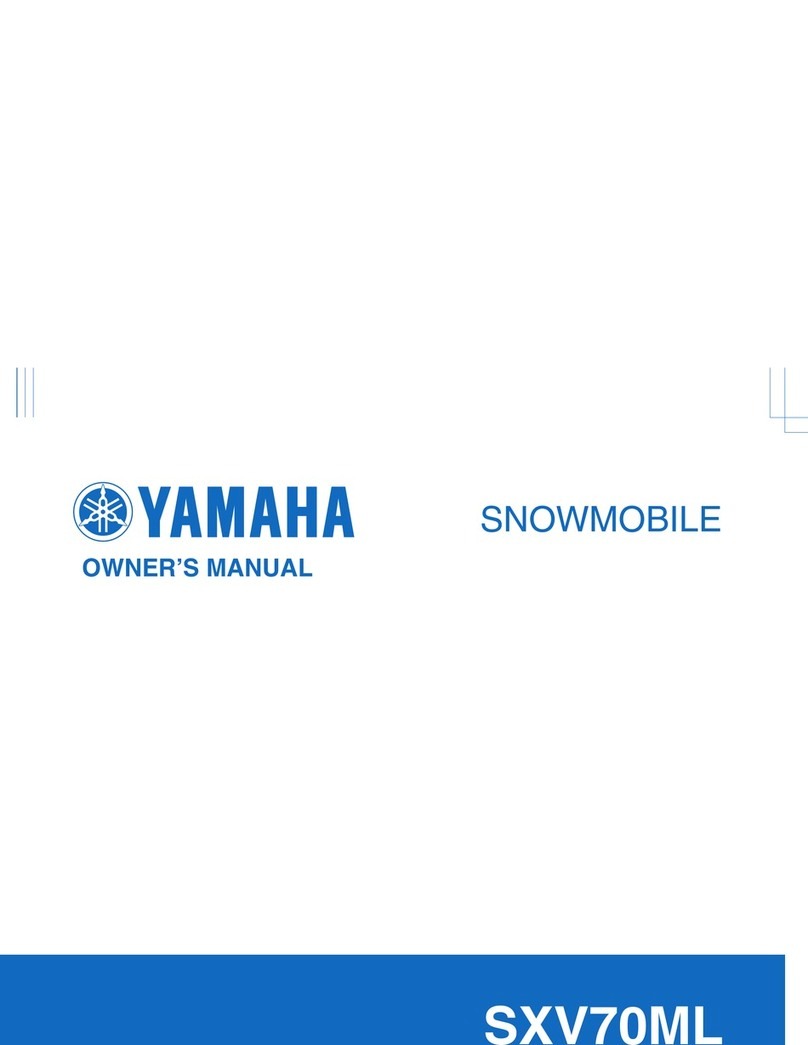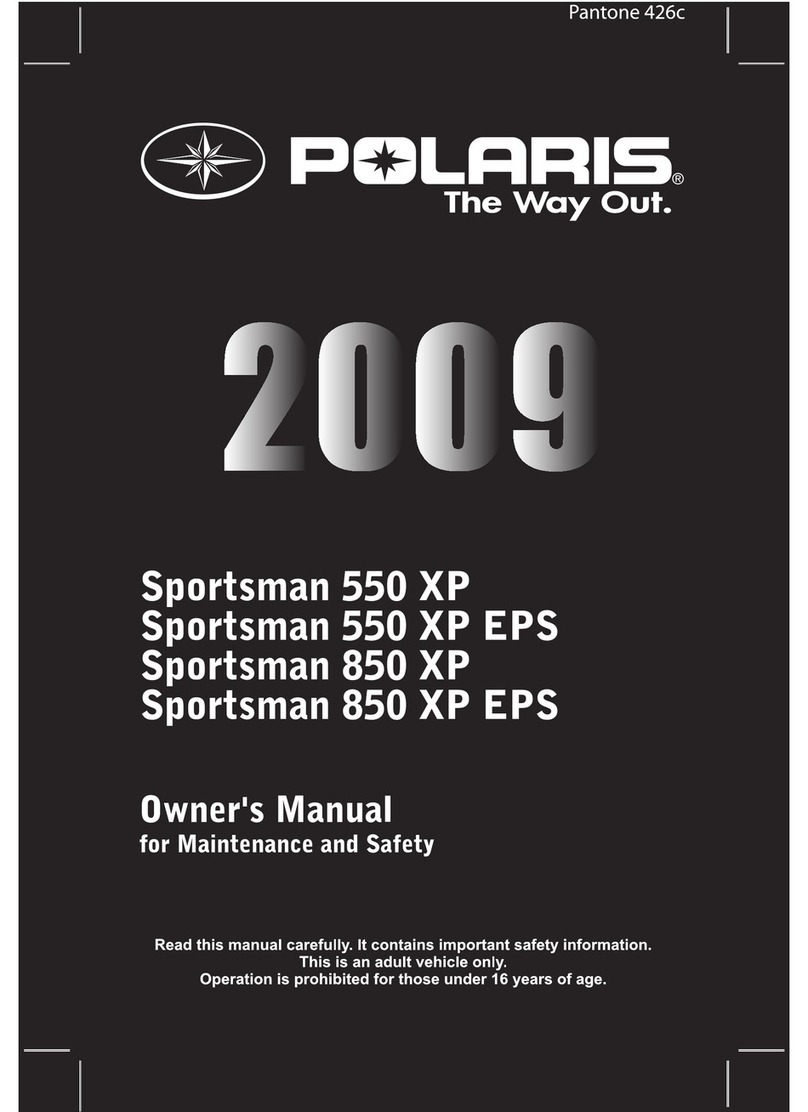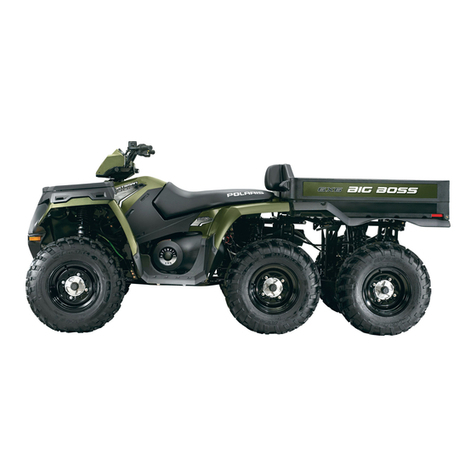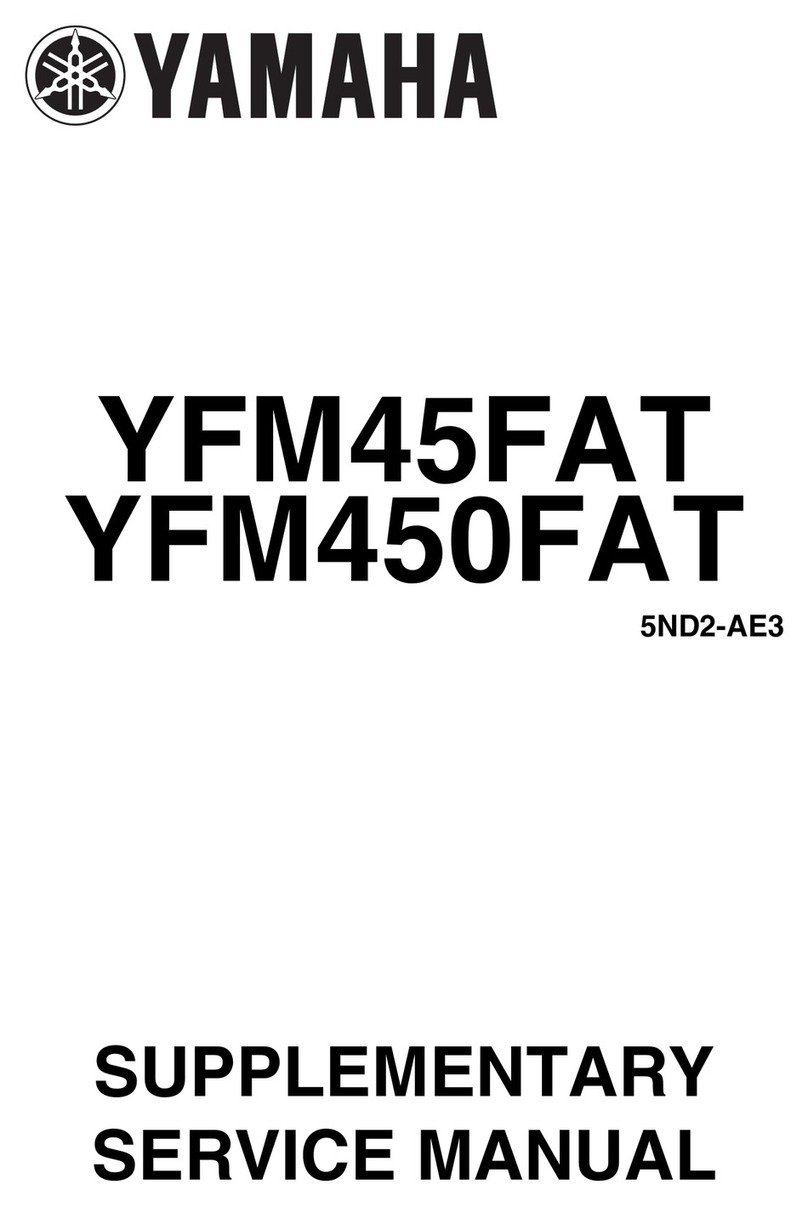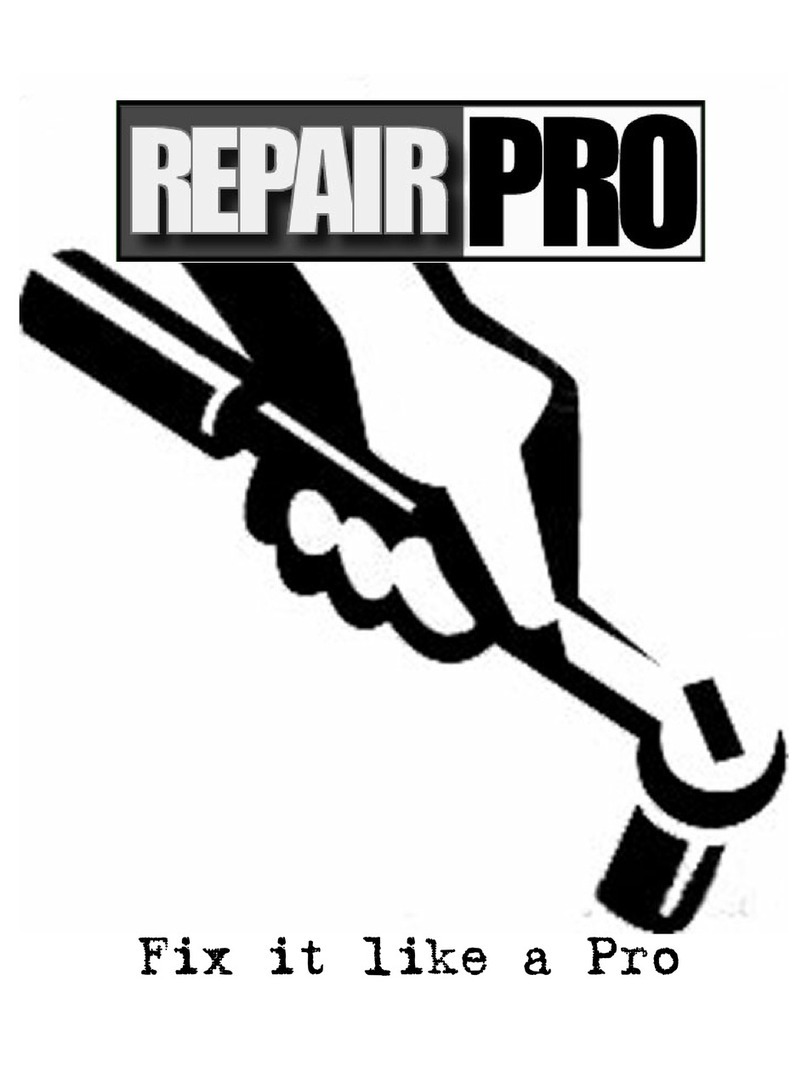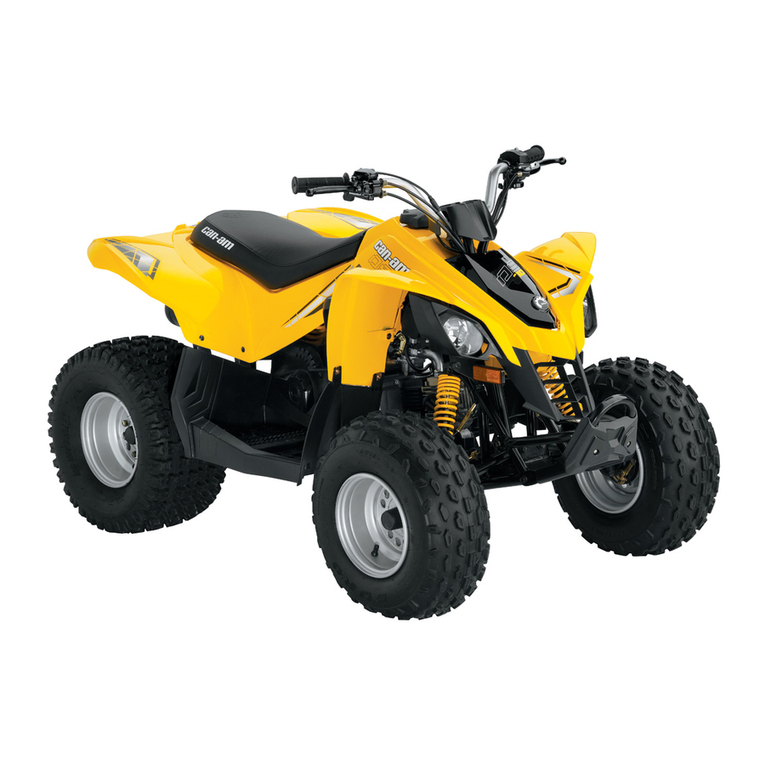
• Always follow proper procedures
for climbing hills as described in
this manual. Check the terrain
carefully before you start up any
hill. Never climb hills with exces-
sively slippery or loose surfaces.
Shift your weight forward. Never
open the throttle suddenly. Never
go over the top of any hill at high
speed.
• Always follow proper procedures
for going down hills and for brak-
ing on hills as described in this
manual. Check the terrain care-
fully before you start down any hill.
Shift your weight backward. Never
go down a hill at high speed.
Avoid going down a hill at an
angle that would cause the vehicle
to lean sharply to one side. Go
straight down the hill where possi-
ble.
• Always follow proper procedures
for crossing the side of a hill as
described in this manual. Avoid
hills with excessively slippery or
loose surfaces. Shift your weight
to the uphill side of the ATV. Never
attempt to turn the ATV around on
any hill until you have mastered
the turning technique described in
this manual on level ground. Avoid
crossing the side of a steep hill if
possible.
• Always use proper procedures if
you stall or roll backwards when
climbing a hill. To avoid stalling,
maintain a steady speed when
climbing a hill. If you stall or roll
backwards, follow the special pro-
cedure for braking described in
this manual. Dismount on the
uphill side or to a side if pointed
straight uphill. Turn the ATV
around and remount, following the
procedure described in this man-
ual.
• Always check for obstacles before
operating in a new area. Never
attempt to operate over large
obstacles, such as large rocks or
fallen trees. Always follow proper
procedures when operating over
obstacles as described in this
manual.
• Always be careful when skidding
or sliding. Learn to safely control
skidding or sliding by practicing at
low speeds and on level, smooth
terrain. On extremely slippery sur-
faces, such as ice, go slowly and
be very cautious in order to
reduce the chance of skidding or
sliding out of control.
• Never operate an ATV in fast flow-
ing water or in water deeper than
that specified in this manual.
Remember that wet brakes may
have reduced stopping ability. Test
your brakes after leaving water. If
necessary, apply them several
times to let friction dry out the lin-
ings.
• Always use the size and type tires
specified in this manual. Always
maintain proper tire pressure as
described in this manual.
• Never modify an ATV through
improper installation or use of
accessories.
• Never exceed the stated load
capacity for an ATV. Cargo should
be properly distributed and
securely attached. Reduce speed
and follow instructions in this man-
ual for carrying cargo. Allow
greater distance for braking.
• The combined weight of the rider,
gear, and any accessories or
cargo must never exceed the vehi-
cle’s load capacity of 38 kg (84
lbs).


